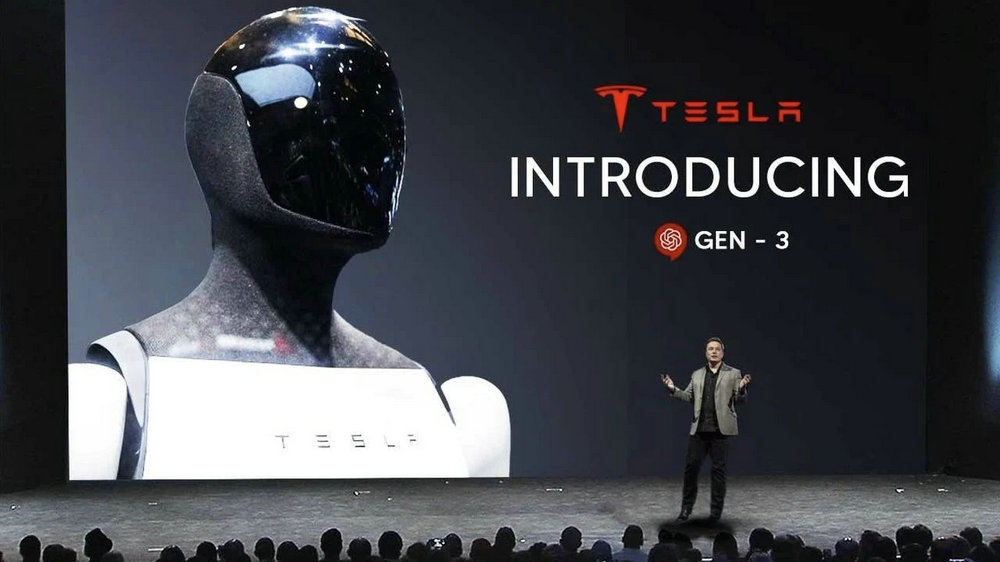
_______________________________________________________________________________________________________________________________________________________________________
Tesla’s humanoid robot Optimus G3 has revealed new images. The two major evolutions this year are in tactile dexterity and weight reduction.
In our previous article, we covered the latest advancements in tactile hands. From the new G3 photos, it's evident that the material texture of the outer shell has changed, reinforcing the trend toward lightweight design.
This article focuses on two core lightweight materials for humanoid robots: PEEK material and magnesium-aluminum alloys.
From the structural composition of humanoid robots, the "brain" and "cerebellum" rely on AI-related materials, while the "limbs" require new chemical materials to achieve both lightweight and sensory functions.
There are generally two paths to achieve robot lightweighting:
Structural optimization: Increase hardware integration—such as using integrated joints, more compact and higher-performing components, or reducing unnecessary exterior parts.
Material substitution: Use lighter and stronger materials—currently the most pursued approach.
Main materials used for lightweighting:
High-performance engineering plastics (e.g., PEEK, PA, PPS, LCP, TPE, UHMW-PE)
Carbon fiber composites
Magnesium-aluminum alloys
Under the trend of replacing metal with plastic, PEEK shows great promise in mid-to-high-end applications due to its excellent performance. To address its brittleness at low temperatures, PEEK is often reinforced with carbon fiber.
Another major direction is to switch to materials with lower density, such as replacing aluminum alloys with magnesium-aluminum alloys.
Humanoid robots require flexible mobility and efficient energy use. Excessive weight affects agility and battery life. In the absence of breakthrough battery technology, lightweight materials help reduce energy loss during movement.
PEEK (Polyether Ether Ketone), a top-tier engineering plastic, offers mechanical strength and high-temperature resistance. It is ideal for parts like gears, joints, and limb skeletons.
Data shows that robots from Tesla, UBTECH, and Fourier Intelligence weigh around 58 kg. On average:
1 kg of pure PEEK is used in gears and joints
8 kg of CF/PEEK is used in limbs
Estimated PEEK usage per robot: 6.6 kg
Raw materials dominate the cost structure, especially fluorinated ketone (DFBP), which is critical for PEEK synthesis. Only a few global suppliers exist:
Major producers in China: Sinochem New Materials, Zhongxin Fluorochemicals, Yingkou Xingfu.
Foreign producers: VICTREX (UK), Solvay (Belgium), Evonik (Germany).
Zhongxin Fluorochemicals has 5,000 tons/year of DFBP capacity, holding a key position in the upstream supply chain.
The production process is complex, with high technical barriers.
Global market structure: Dominated by VICTREX (UK), Solvay (Belgium), and Evonik (Germany), which together control over 80% of the global PEEK capacity.
Since 2016, Chinese companies have gradually broken this monopoly. Leading Chinese producers include:
Zhongyan
ARKPEEK
Jida Special Plastics
Zhongyan is the fourth global company to surpass 1,000 tons in PEEK production and the second globally with 5,000L reactors for polymerization.
Other players in China: Junhao, JuLong, Watertek, Plite, Huami New Materials, Kingfa, Suolin, Huitong.
Common molding techniques:
Injection molding (most efficient for CF/PEEK)
Hot pressing
Compression molding
Injection molding works like a syringe—plastic is melted and injected into molds to solidify into the final product.
PEEK's brittleness and high cost are concerns. The solution: Carbon fiber-reinforced PEEK (CF/PEEK). This increases strength, modulus, and deformation resistance.
Data from “Performance Research on CF/PEEK Composites” shows:
70% volume carbon fiber CF/PEEK has similar tensile strength/modulus as aluminum or titanium alloys
Density: only 58% of aluminum, 36% of titanium
Main technologies for producing CF/PEEK prepreg:
Melt impregnation
Powder suspension
Hybrid molding
Example: In melt impregnation, carbon fibers are preheated and spread, then immersed in molten PEEK under high temp/pressure to form continuous CF/PEEK prepregs.
Major producers:
TenCate (now Toray)
Gurit Suprem (Switzerland)
ICI (UK)
Domestic: ARKPEEK, Guangwei Composites
Tesla’s 3rd-gen humanoid robots may use magnesium-aluminum alloys.
This alloy is:
Lighter (about 2/3 the weight of aluminum, 1/4 of steel)
High strength
Good heat dissipation
Suitable for robot shells, torsos, and joint structures
Honda ASIMO: Magnesium shell improved mobility by 50%
ABB YuMi: Magnesium arms enabled precise grip and human-robot interaction
Baowu Magnesium & Estun Robotics: Exploring magnesium alloy use in robotics
Yian Technology: Early adopter of large magnesium-aluminum die casting
Wanfeng Auto Holding: Leading magnesium alloy supplier for autos in North America
Xingyuan Zhuomei: Operating 6000-ton die-casting machines; battery casings in mass production
Magnesium alloys are expected to see increased demand as internal components in robots replace traditional materials.